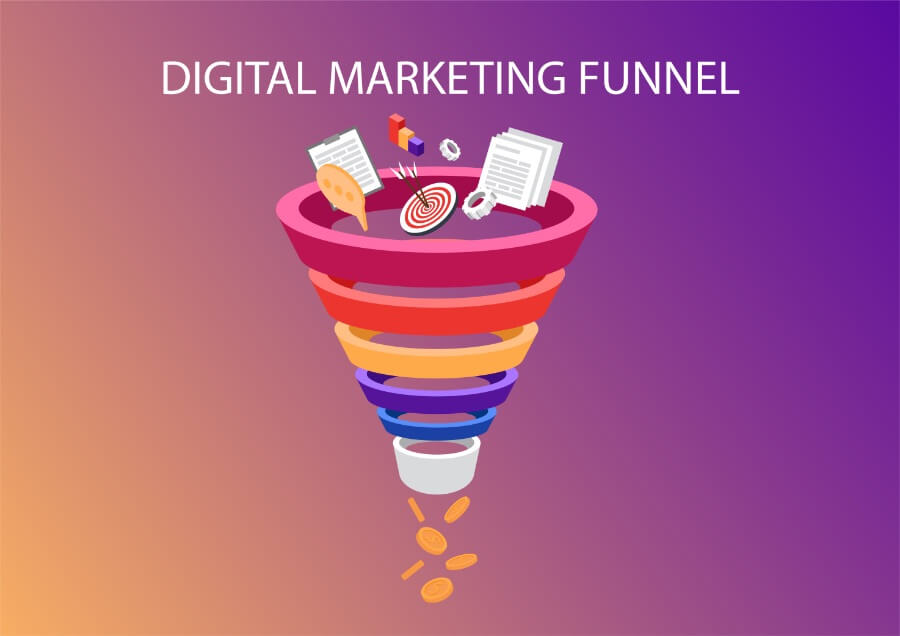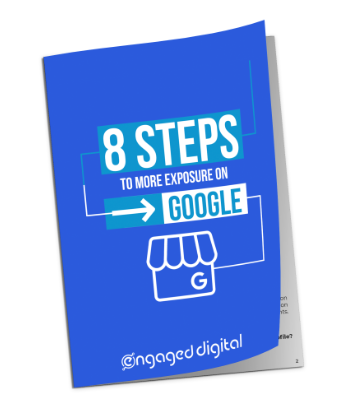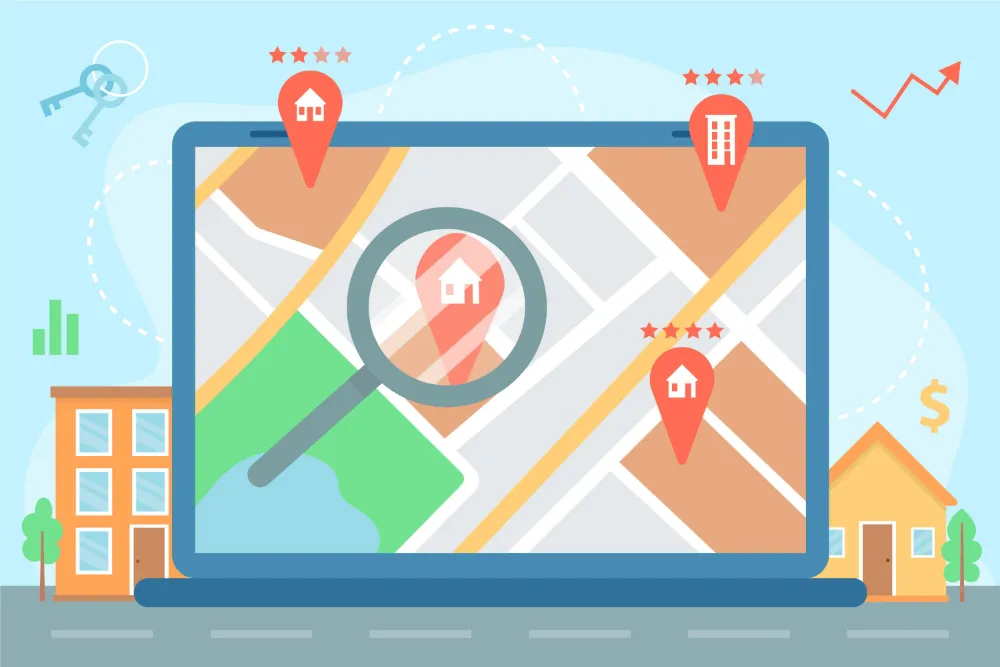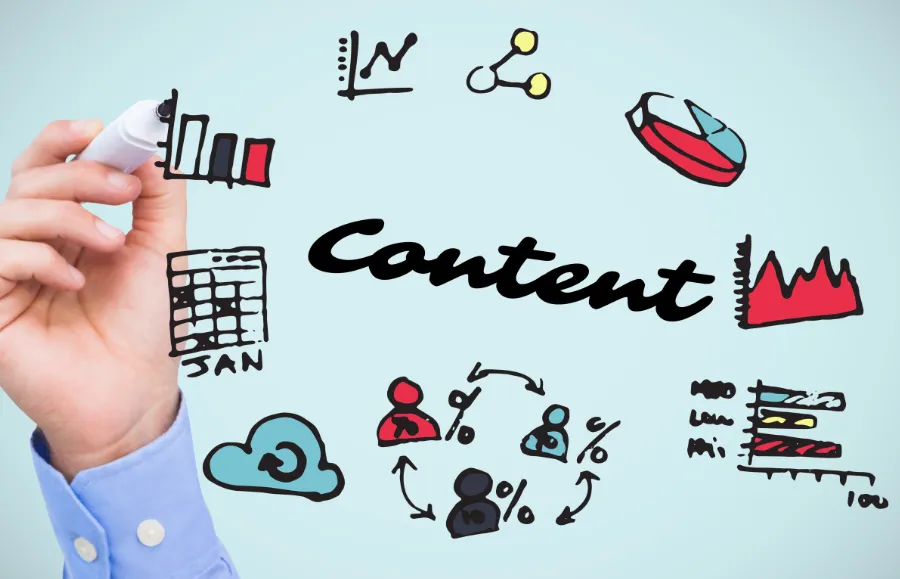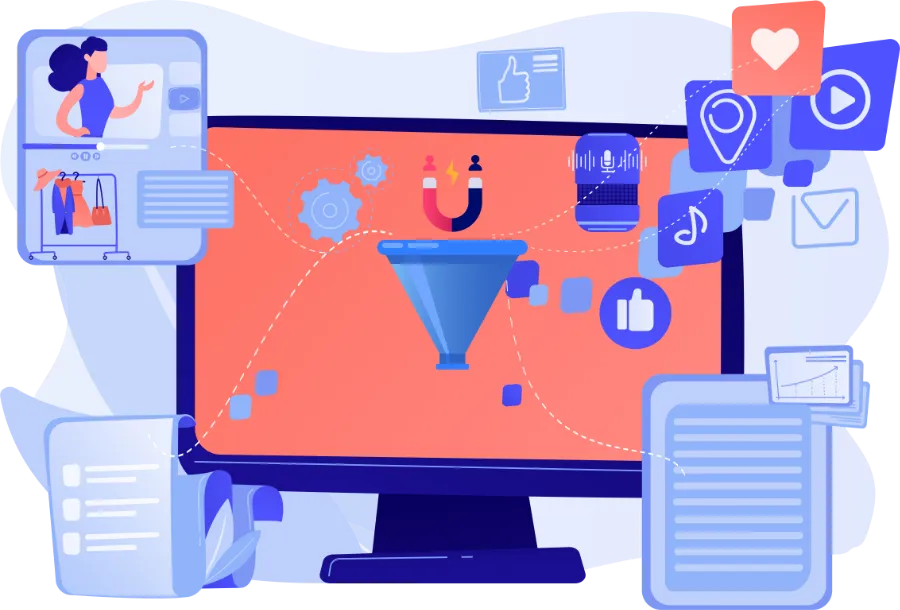Did you know that understanding conversion funnels and multiple funnels could be the game-changer marketers need to navigate the customer journey in digital marketing? In today’s competitive landscape, marketers who understand conversion funnels and the customer journey can drive significant growth and success. Additionally, focusing on customer retention is crucial for long-term success in digital marketing.
Traditional marketing strategies alone may no longer suffice in reaching marketers’ target audience effectively and building a strong brand presence throughout the customer journey, which is crucial for business growth. That’s where the digital marketing funnel comes into play. By strategically aligning your marketing efforts with each stage of the funnels, marketers can maximize their chances of converting leads into loyal customers. This can be achieved by optimizing the landing page and collaborating with sales teams.
Consider this: marketers that implement a well-defined marketing funnel experience a 79% higher return on investment (ROI) compared to those who don’t. Funneling customers through the customer journey is essential for maximizing brand presence. This shocking statistic highlights the importance of leveraging a well-crafted marketing strategy that caters to every step of the sales funnel and click funnel for consumers during a campaign.
So, let’s get started!
What is a Digital Marketing Funnel?
A digital marketing funnel is a strategic framework used to guide consumers through the sales journey of a product online. Funnels are designed to make the buying process more efficient and enjoyable for consumers. It helps businesses attract, engage, and convert potential customers into paying clients by mapping out the various stages of the customer’s interaction with the brand through an effective marketing strategy and digital marketing sales funnel. These marketing actions are essential in guiding customers through the funnel marketing process. By understanding the customer journey and incorporating funnels into their digital marketing strategies, businesses can optimize sales and drive revenue from consumers.
At its core, a digital marketing funnel aims to guide consumers through the customer journey, creating awareness, generating interest, fostering desire, and ultimately leading to action for the product. It serves as a roadmap for businesses to nurture leads and build relationships with their target audience through an effective marketing strategy. The digital marketing sales funnel is a key tool in guiding customers through their journey, ensuring that they move smoothly from awareness to consideration and ultimately, conversion. By implementing funnel marketing techniques, businesses can optimize their marketing efforts and drive successful outcomes. Let’s delve deeper into how marketing funnels guide customers through their buying journey in a marketing strategy. Marketing funnels are an essential part of any marketing campaign as they help to drive customers towards purchasing a product.
The Purpose of a Digital Marketing Funnel
The primary purpose of a digital marketing funnel is to strategically move prospects through the customer journey, from initial awareness to final conversion. These funnels are essential for driving sales and effectively promoting a product. It allows businesses to tailor their messaging and tactics according to each stage of the digital marketing sales funnel, funnel marketing, and marketing funnels in order to optimize their marketing campaign. By aligning marketing efforts with specific stages in the sales funnel, companies can effectively address customer needs for their product or service at every step.
Guiding Customers Through Their Buying Journey
A well-constructed digital marketing funnel acts as a virtual tour guide for potential customers as they navigate through different touchpoints with your product, brand, and website. It helps to increase sales by guiding customers through each stage of the buying process. Starting from the top of the marketing funnels where awareness of the product is created, it gradually narrows down towards sales conversion at the bottom stage.
Here are some key components and stages typically found in a digital marketing funnel on a website. These components and stages are crucial for driving sales and converting website visitors into customers of a specific product.
- Awareness: This stage focuses on attracting potential customers by increasing brand visibility through various channels such as search engine optimization (SEO), social media advertising, content marketing, and influencer partnerships. It is crucial for the sales funnel as it helps create awareness of the product or service and addresses the need of potential customers. It is crucial for the sales funnel as it helps create awareness of the product or service and addresses the need of potential customers. It is crucial for the sales funnel as it helps create awareness of the product or service and addresses the need of potential customers.
- Interest: Once individuals are aware of your brand or product, it’s crucial to pique their curiosity further in the digital marketing sales funnel. Funnel marketing helps guide the customer through each marketing funnel stage, ultimately leading to a successful conversion. Engaging content like blog posts, videos, webinars, or free resources can be utilized in the funnel marketing process to captivate the customer’s interest and encourage them to learn more about your product or service.
- Desire: At this stage of the funnel marketing, the goal is to nurture leads and build desire for your product or service among potential customers. Providing valuable information, testimonials, case studies, and personalized offers can help create a sense of urgency and desire among potential customers for your product or service at every stage.
- Action: The final stage of the funnel is where product conversions happen for the customer. In the product stage, it’s crucial to make it as easy as possible for customers to take action and purchase the product. This can be achieved by implementing clear call-to-actions and user-friendly landing pages to guide the customer through the product stage. Additionally, optimizing the checkout process and implementing effective follow-up strategies can further enhance the customer’s experience.
By understanding how each stage in the customer funnel works together cohesively, businesses can optimize their digital marketing efforts to drive conversions and achieve their product goals.
Importance of a Digital Marketing Funnel
Having a well-defined digital marketing funnel is crucial for online success. The funnel helps guide the customer through each stage of the buying process, from initial awareness of the product to making a purchase decision. The funnel helps guide the customer through each stage of the buying process, from initial awareness of the product to making a purchase decision. The funnel helps guide the customer through each stage of the buying process, from initial awareness of the product to making a purchase decision. It provides businesses with a strategic approach to target and engage their customer effectively, ultimately optimizing their digital marketing efforts for their product.
A digital marketing funnel is a product that acts as a roadmap, guiding potential customers through various stages of the buyer’s journey. By understanding these stages, businesses can tailor their content marketing strategies to address the specific needs and concerns of their target audience at each step of the customer journey. This will help businesses effectively promote their product to the right customer.
One of the key benefits of having a well-structured product funnel is the ability to capture leads and convert them into customers at every stage. By creating awareness through targeted content, businesses can attract potential customers who are actively seeking product solutions to their problems. For example, if you run an e-commerce store selling fitness equipment, you might create blog posts or videos on topics such as “5 Essential Home Workout Equipment” or “How to Stay Fit During Lockdown.” These pieces of content not only provide value to your customer but also position your product as an authority in the industry.
Once you have captured the attention of your target audience, it’s important to nurture those leads by providing relevant information about your product and building trust with the customer. This is where the customer’s interaction with the product in the middle stage of the funnel comes into play. Through email marketing campaigns, personalized recommendations, or retargeting ads, businesses can continue engaging with potential customers and guiding them towards making a purchase decision for their product. For instance, you could offer a free e-book on “10 Effective Workout Routines” to the customer in exchange for their email address. This product is a great way to engage with the customer and build your email list. This allows you to stay connected with your customer and provide valuable insights while subtly promoting your products.
The final stage of the funnel focuses on converting the customer and retaining their interest in the product. At this point, potential customers are ready to make a purchase of your product as they have developed trust in your brand. By offering incentives such as discounts or limited-time offers, businesses can encourage prospects to take action and become paying customers of their product. Post-purchase follow-ups and customer support are crucial for retaining customers and nurturing long-term relationships with the product.
Optimizing your digital marketing efforts with a strategic funnel approach brings several advantages for both the product and the customer. Firstly, it helps you maximize the return on investment (ROI) by ensuring that your resources are allocated efficiently throughout the product buyer’s journey. This ensures that the customer is satisfied with the product and their investment is worthwhile. By understanding which stages of the product funnel require more attention, businesses can allocate their budget and efforts accordingly to better serve the customer.
Secondly, a well-defined product funnel allows businesses to track key performance indicators (KPIs) for each customer stage, providing valuable insights into the effectiveness of their marketing campaigns. This data-driven approach enables businesses to identify areas for improvement and make data-backed decisions to enhance their overall marketing strategy for the benefit of the customer.
Stages of the Digital Marketing Funnel
Awareness stage: Attracting potential customers to your brand or product
In the first stage of the digital marketing funnel, the focus is on creating awareness about your brand or product among potential customers. This is where you grab the attention of potential customers and introduce them to what you have to offer. To effectively attract a wider audience and engage potential customers, it’s essential to employ various marketing strategies that cater to the needs and preferences of the target customer base.
One effective way to generate awareness among customers is through social media channels. By leveraging platforms like Facebook, Instagram, and Twitter, you can reach a large number of customers who may be interested in your offerings. Engaging posts with eye-catching visuals and compelling captions can entice customers to click and explore further.
Another key strategy at this stage is the use of landing pages to engage the customer. These dedicated web pages are designed specifically for capturing leads by providing valuable information and enticing visitors to take the next step in their customer journey. A well-designed landing page can present an irresistible offer that encourages users to engage with your brand and provide their contact information, making it a valuable tool for attracting and converting potential customers.
Consideration stage: Nurturing leads and providing relevant information to build trust
Once potential customers are aware of your brand, it’s important to nurture those leads and build trust with them. The consideration stage focuses on providing relevant information that helps potential customers make informed decisions about whether they want to proceed further.
One effective tactic at this stage is running targeted email campaigns to engage and convert potential customers. By segmenting your customer audience based on their interests or previous interactions with your brand, you can deliver personalized content directly into their inbox. This could include case studies, testimonials, or informative blog posts that address common customer pain points.
Offering free resources such as e-books or whitepapers can help establish credibility and showcase expertise to the customer in your industry. By providing valuable content without asking for anything in return, you demonstrate a genuine desire to help potential customers solve their problems.
Conversion stage: Converting leads into paying customers through targeted actions
The ultimate goal of the digital marketing funnel is to convert leads into paying customers. In the conversion stage, it’s crucial to guide potential customers towards taking specific actions that lead to a purchase.
One effective method for driving conversions is through well-crafted calls-to-action (CTAs) that directly engage the customer. These customer prompts encourage users to take the next step in their buying journey. CTAs can be strategically placed to engage the customer on landing pages, within emails, or even on social media posts. By using action-oriented language and emphasizing the value they will receive, you can motivate potential customers to click and move closer to making a purchase.
Another important aspect of the conversion stage is optimizing the checkout process for the customer. A seamless and user-friendly purchasing experience can significantly increase customer conversion rates. Simplify the steps required for completing a customer purchase, minimize distractions for the customer, and offer multiple secure payment options to cater to different customer preferences.
By effectively navigating each stage of the digital marketing funnel – from creating awareness to nurturing leads and converting them into paying customers – businesses can maximize their chances of success in today’s competitive online landscape. Remember, understanding your target audience and tailoring your strategies to meet the needs of your customer will greatly enhance your overall marketing efforts.
Attracting and Captivating Interest
Creating awareness and generating interest in your offerings is crucial for attracting potential customers in the digital marketing funnel. By employing effective strategies, you can attract and engage your target audience, ultimately driving them towards conversion. These strategies are crucial for building a strong relationship with your customers and ensuring their satisfaction. These strategies are crucial for building a strong relationship with your customers and ensuring their satisfaction. These strategies are crucial for building a strong relationship with your customers and ensuring their satisfaction.
How to Get Leads Into Your Digital Marketing Funnel
Acquiring Leads for Your Digital Marketing Funnel
When it comes to building a successful digital marketing funnel, acquiring leads is crucial. These leads are potential customers who have shown interest in your products or services. To help you generate more leads and boost your sales, here are some effective strategies you can implement:
1. Create Compelling Lead Magnets
Offering valuable content in exchange for contact information is a great way to attract leads. Create compelling lead magnets such as ebooks, whitepapers, or guides that provide useful information related to your industry. Make sure your lead magnet is visually appealing and addresses a specific pain point or challenge your target audience faces.
2. Optimize Your Website for Lead Generation
Your website should be designed with lead generation in mind. Place prominent call-to-action buttons throughout your site, encouraging visitors to take the desired action. Use eye-catching forms to capture lead information and integrate them with your email marketing software for easy follow-up.
3. Leverage Social Media Advertising
Social media platforms offer powerful targeting options that allow you to reach your ideal audience. Create compelling ads that highlight the benefits of your products or services and direct users to a landing page where they can provide their contact information. Experiment with different ad formats and platforms to find what works best for your business.
4. Utilize Email Marketing Campaigns
Email marketing is a highly effective way to nurture leads and guide them through your marketing funnel. Segment your email list based on the interests and behaviors of your leads, and send targeted campaigns that provide value and encourage engagement. Personalize your emails to make them feel more relevant and build a connection with your leads.
5. Implement Search Engine Optimization (SEO) Techniques
Optimizing your website for search engines can help drive organic traffic and generate leads. Conduct keyword research to identify relevant keywords and incorporate them into your website’s content, meta tags, and URLs. Create high-quality, informative content that answers your target audience’s questions and positions you as an expert in your industry.
6. Collaborate with Influencers or Industry Experts
Partnering with influencers or industry experts can help you reach a wider audience and gain credibility. Identify influencers or experts in your niche and collaborate with them on content creation or promotions. This can expose your brand to their followers and generate leads who trust their recommendations.
7. Host Webinars or Live Events
Webinars and live events are effective lead generation tools as they provide valuable information while allowing you to collect contact information from attendees. Choose topics that are relevant to your target audience and promote your event through email marketing, social media, and your website.
By implementing these strategies, you can acquire more leads for your digital marketing funnel and increase your chances of converting them into paying customers. Remember to continuously analyze and optimize your lead generation efforts to maximize your results.
Tips for Capturing Attention
In today’s competitive landscape, standing out from competitors requires creativity and innovation. Here are some tips for capturing attention:
- Develop a Strong Value Proposition: Clearly communicate what sets your business apart from others in the market. Highlight the benefits customers can expect from your offerings and emphasize unique features or advantages.
- Engaging Visuals: Use eye-catching imagery, videos, and infographics to make your content visually appealing. Visual elements can quickly grab attention and convey information effectively.
- Personalize Your Approach: Tailor your messaging to resonate with specific segments of your target audience. Leverage data on user preferences, demographics, and behaviors to create personalized campaigns that speak directly to their needs.
- Emphasize Social Proof: Incorporate testimonials, case studies, or reviews from satisfied customers to build trust and credibility. People are more likely to be interested in a product or service when they see positive feedback from others.
- Interactive Content: Offer interactive experiences such as quizzes, polls, or contests that encourage audience participation. This not only captures attention but also increases engagement levels.
- Be Consistent Across Channels: Maintain a cohesive brand identity across all marketing channels to reinforce recognition and build trust with your audience.
By implementing these strategies and tips, you can effectively attract interest at the top of the digital marketing funnel while differentiating yourself from competitors. Remember that capturing attention is just the first step; it is equally important to nurture leads further down the funnel through targeted campaigns and compelling offers.
Nurturing Consideration and Solving Queries
Building relationships with leads is a crucial aspect of the digital marketing funnel. To effectively nurture leads in the middle of the funnel, it is essential to address their concerns and provide valuable information. By doing so, you can establish trust and credibility while guiding potential customers towards making informed decisions.
One strategy for nurturing consideration is through email marketing. Sending personalized emails that cater to the specific interests and needs of leads can greatly enhance their engagement. These emails should focus on providing relevant content, answering frequently asked questions, and offering solutions to common pain points. By consistently delivering valuable information, you can keep your brand at the forefront of their minds.
Another effective way to nurture consideration is by offering lead magnets such as e-books, whitepapers, or exclusive content. These resources serve as incentives for prospects to share their contact information with you. Once they have opted in, you can continue nurturing them by sending targeted content that aligns with their interests and challenges.
Webinars or demos are also powerful tools for nurturing leads in the middle of the funnel. Hosting informative webinars where you provide insights and solutions related to your industry can help establish your expertise while addressing any lingering questions or doubts. Similarly, offering product demos allows potential customers to experience firsthand how your solution can solve their problems.
Establishing credibility as an industry expert is vital during this stage of the digital marketing funnel. By positioning yourself as a trusted source of knowledge, you build confidence in potential customers’ minds regarding your products or services. One effective approach is creating educational content that addresses frequently asked questions or provides step-by-step guides on using your offerings effectively.
To gain a deeper understanding of your target audience’s needs and preferences, conducting surveys can be immensely helpful. Surveys not only allow you to gather valuable insights but also demonstrate that you genuinely care about meeting customer expectations. Utilize these survey results to optimize user experience on your website or refine your products and services accordingly.
Optimizing your website for search engines is another crucial aspect of nurturing consideration. By ensuring that your content is easily discoverable through relevant keywords, you increase the chances of attracting potential customers who are actively seeking solutions. Implementing effective SEO strategies can significantly boost your visibility and bring more qualified leads into the funnel.
Converting Leads into Customers
Implementing effective call-to-actions (CTAs) that encourage conversions
One of the key elements in converting leads into customers is the implementation of effective call-to-actions (CTAs). CTAs act as a catalyst for potential customers to take action and move forward in their customer journey. Marketers need to strategically place these CTAs throughout their digital marketing funnel to guide leads towards making a purchase or taking the desired action.
To optimize CTAs for higher conversion rates, businesses should focus on creating compelling and persuasive messages. By clearly communicating the value proposition and benefits of their products or services, marketers can capture the attention of potential customers and motivate them to take the next step. For example, using action-oriented phrases like “Get Started Now” or “Claim Your Free Trial” can create a sense of urgency and encourage immediate action.
Optimizing landing pages for higher conversion rates
Landing pages play a crucial role in converting leads into customers. These dedicated pages are designed to provide relevant information about a product or service while encouraging visitors to take specific actions. To optimize landing pages for higher conversion rates, businesses should consider the following:
- Clear and concise messaging: Ensure that the headline and subheadings clearly communicate the value proposition and highlight key benefits.
- Compelling visuals: Use high-quality images or videos that resonate with potential customers and showcase your product/service effectively.
- Streamlined forms: Keep form fields minimal and only ask for essential information to reduce friction during the conversion process.
- Trust indicators: Incorporate social proof elements such as testimonials, reviews, or trust badges to build credibility.
- Mobile optimization: Optimize landing pages for mobile devices since an increasing number of potential customers access websites through smartphones.
Using persuasive techniques such as social proof, scarcity, or discounts to motivate action
Persuasive techniques can significantly impact lead conversions by tapping into human psychology and motivating potential customers to take action. Here are some persuasive techniques that businesses can utilize:
- Social proof: Showcase testimonials, reviews, or case studies from satisfied customers to build trust and credibility.
- Scarcity: Create a sense of urgency by highlighting limited-time offers, exclusive deals, or limited stock availability.
- Discounts and incentives: Offer discounts, free trials, or bonuses to incentivize potential customers to make a purchase.
- Personalization: Tailor the messaging and offers based on the specific needs and preferences of potential customers.
By leveraging these persuasive techniques strategically within the digital marketing funnel, businesses can effectively nudge leads towards conversion.
Optimizing and Measuring Your Funnel
Congratulations! You now have a solid understanding of what a digital marketing funnel is, why it’s important, and the various stages involved. But your journey doesn’t end here. To truly harness the power of your funnel, you need to optimize and measure its performance continuously.
Optimizing your funnel involves identifying areas where you can improve conversions at each stage. Are there any bottlenecks or drop-offs that need attention? Is your messaging clear and compelling? By constantly tweaking and refining your strategies, you can ensure that more leads make it through the entire funnel.
Measuring the effectiveness of your funnel is equally crucial. Track key metrics like conversion rates, click-through rates, and customer acquisition costs to gauge the success of your efforts. Use analytics tools to gain insights into user behavior and identify opportunities for improvement. Remember, a well-optimized and data-driven digital marketing funnel can significantly boost your business growth.
So, what are you waiting for? Start implementing these strategies today to supercharge your digital marketing efforts!
FAQs
How long does it take to see results from a digital marketing funnel?
It depends on various factors such as industry, target audience, and campaign objectives. While some businesses may start seeing results within weeks, others might take several months to achieve their desired outcomes. Consistency in implementing strategies and continuous optimization are key.
Should I focus on all stages of the funnel equally?
Not necessarily. The amount of focus you allocate to each stage should depend on your specific business goals and target audience behavior. For instance, if you have a high-quality product but struggle with lead generation, dedicating more resources to attracting interest would be wise.
How can I improve conversion rates in my digital marketing funnel?
There are several tactics you can employ: optimize landing pages for better user experience, personalize content based on user preferences, provide social proof and testimonials, simplify the checkout process, and offer incentives like discounts or free trials.
What role does content play in the digital marketing funnel?
Content is crucial at every stage of the funnel. It helps attract and engage potential customers, educates them about your products or services, builds trust and credibility, and ultimately convinces them to convert. Invest in creating high-quality, relevant content that resonates with your target audience.
How often should I review and update my digital marketing funnel?
Regularly reviewing and updating your digital marketing funnel is essential to stay ahead of the competition and adapt to changing market trends. Aim for quarterly or bi-annual reviews to ensure your strategies remain effective and aligned with your business goals.

